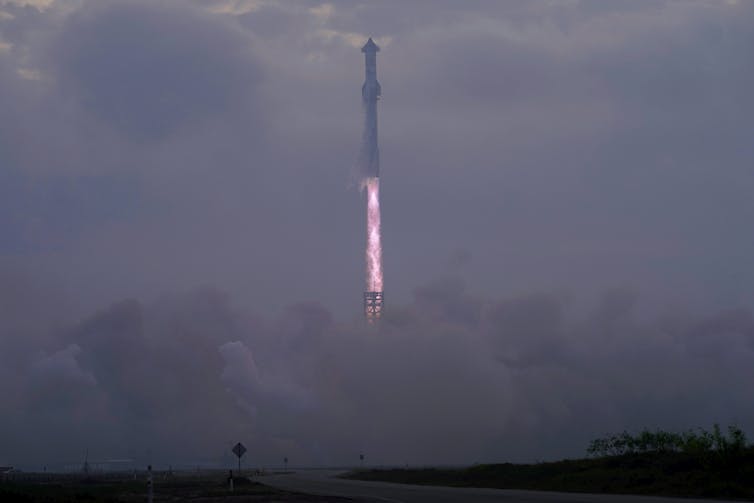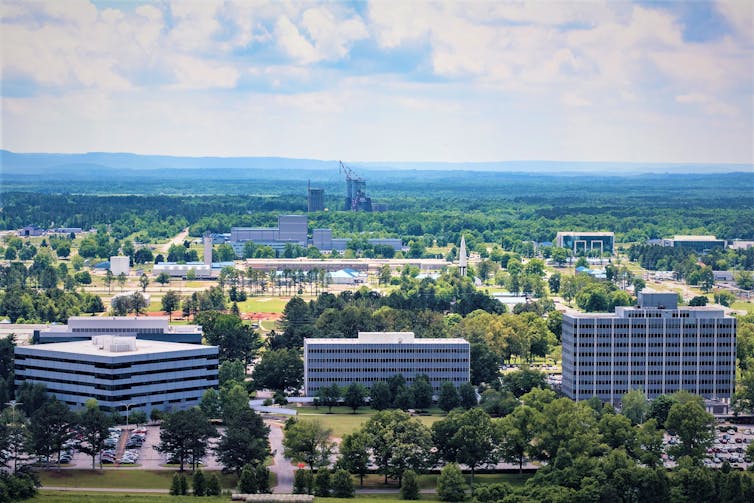US participation in space has benefits at home and abroad − reaping them all will require collaborat
You have the US space program to thank for some of the technology in your phone and laptop.

When people think about what we get from the U.S. space program, it may be along the lines of NASA technology spin-offs such as freeze-dried food and emergency space blankets.
But space activities do much more that benefits life on Earth. Research in space helps scientists study our environment, develop new technologies, create jobs, grow the economy and foster international collaboration.
Of course, with reports of Russia developing an anti-satellite nuclear weapon, members of Congress and the media have focused their attention on space defense and military readiness.
This is critical, but there are still many other benefits to reap from space. Getting the most out of U.S. space involvement will require collaborating across various social, environmental, commercial, governmental, international and technological backgrounds.
As a space policy scholar focused on private-public partnerships, networks and coalitions, I’ve seen that policymakers can get the most out of U.S. space endeavors if they invite a wide array of experts into policy discussions.
Benefits on Earth
NASA satellites play a crucial role in documenting changes in global temperatures, sea-level rise, arctic ice extent and air quality. Satellites have also been collecting data for almost 50 years to monitor water use, crop health and crop production. These long-term observations help researchers track environmental changes across the globe.
Space research provides a wide array of technologies in addition to rockets and Moon landers. Cellphone cameras, CAT scanners, the computer mouse, laptops, wireless headsets and water purification systems are just a few public goods NASA has generated.
These spin-off technologies come from NASA’s partnerships with private firms, which subsequently make scientific discoveries widely available and accessible.
Growing the space economy
Experts predict that the space sector will continue driving the development of nonspace industries. Agriculture, energy, mining, transportation and pharmaceuticals are just some of the sectors that benefit through spin-off technologies and space-based research.
For example, scientists can conduct experiments on the International Space Station using the microgravity of space to study the chemistry of drugs, improve medications and test cancer treatments.
More organizations and individuals than ever share a vested interest in the space sector’s success. Experts anticipate the global space economy – the resources used in space for activities – and research and development will continue to grow to a market of US$1.4 trillion by 2030.
Commercialization policies opened U.S. space activities to the private sector. This has led to partnerships with companies, such as SpaceX, Blue Origin and others, that are growing the space economy.
These companies have increasingly launched rockets and deployed satellites in recent years. This has increased the need for workers, both in manufacturing positions and specialized STEM roles. Additionally, private companies and universities are partnering to develop various technologies, such as landing systems for a U.S. return to the Moon.

Communities that host space industry centers have seen economic and educational benefits. For example, Huntsville, Alabama, home of the Marshall Space Flight Center and the U.S. Space and Rocket Center, has attracted an educated workforce with one of the highest rates of engineers per capita. Almost half of residents over the age of 25 in Huntsville have a bachelor’s degree or higher.

This rate starkly contrasts with the national average, where 37% have at least a bachelor’s degree, and the state’s 27% average. Additionally, Huntsville’s annual median household income is $8,000 higher than the Alabama average.
Since 1982, Huntsville has also hosted over 750,000 students at the U.S. Space and Rocket Center space camp. This camp educates students about science, technology, engineering and leadership to prepare them for a potential future STEM career.
International collaboration
Space also provides an opportunity for the U.S. to collaborate with other countries.
For example, the U.S. works jointly with Italy to observe the impacts of air quality on human health. The James Webb Space Telescope, a result of partnerships between NASA, the European Space Agency and the Canadian Space Agency, allows scientists to peer into previously unobserved parts of the cosmos. International collaboration has also established the Artemis Accords, a set of principles agreed to by 40 countries for peaceful, sustainable and transparent cooperation in space.
Getting the most out of space
Right now, U.S. space policymaking occurs at the federal and international level. And while people outside of the government can act as witnesses during congressional hearings or through advocacy groups, that involvement may not be enough to represent the wide spectrum of viewpoints and interests in space policy.
There are a few ways policymakers can receive input from different stakeholders. These might include inviting more experts from various policy areas to provide recommendations in congressional hearings, collaborating with advocacy coalitions to create sustainable policies, strengthening and expanding private-public partnerships, and setting a space agenda that emphasizes research and development.
Cheyenne Black does not work for, consult, own shares in or receive funding from any company or organization that would benefit from this article, and has disclosed no relevant affiliations beyond their academic appointment.
Read These Next
School shootings dropped in 2025 - but schools are still focusing too much on safety technology inst
Prevention methods like lockdown drills do not account for many scenarios, including the likely case…
The North Pole keeps moving – here’s how that affects Santa’s holiday travel and yours
There are actually two North Poles. One has been wandering over northern Canada and north of there for…
2 superpowers, 1 playbook: Why Chinese and US bureaucrats think and act alike
The men and women tasked with implementing policy are governed by the same incentives and constraints…





